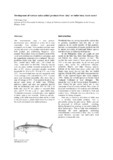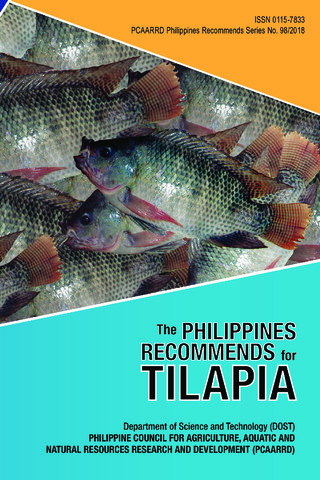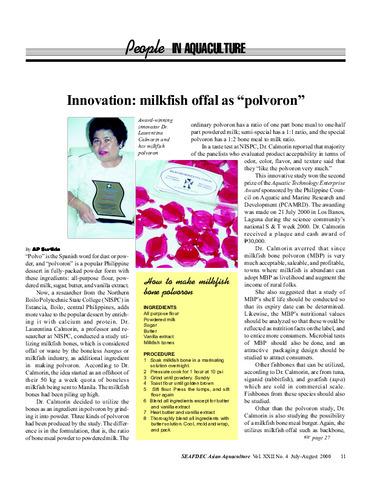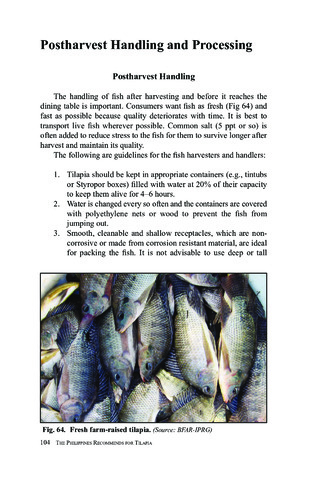Development of various value-added products from 'aloy' or bullet tuna Auxis rochei
- Global styles
- MLA
- Vancouver
- Elsevier - Harvard
- APA
- Help
Share
Abstract
The recommended steps in new product development were followed to utilize bullet tuna maximally. New products were generated, evaluated, and refined. Three product concepts were initially advanced to the product optimization stage; both product and positioning blueprints were created. The products were optimized in terms of the levels and combinations of additives and spices, and the organoleptic properties were evaluated. The new products—bullet tuna loaf, seasoned dried bullet tuna, canned spicy bullet tuna, and canned pet foods—were tested for shelf-life. Tuna loaf treated with potassium sorbate remained acceptable for 29 days at 0°C, whereas untreated samples remained acceptable for 26 d at 0°C, 16 d at 14°C, and 3 d at 35°C. Seasoned dried tuna was still acceptable until 15 d in storage at 0°C and until 6 d at 35°C. Canned spicy tuna remained acceptable after more than a year of storage at 35°C. Cost analysis based on the current retail prices of bullet tuna (P30/kg), additives, spices and other raw materials showed that the production costs were: P19 for 100 g of bullet tuna loaf; P2 for a piece of seasoned dried tuna; and P 12.5 for a can of spicy bullet tuna. Traditional processing methodologies were applied to bullet tuna as raw material. Smoking and dry-salting yield bullet tuna products that can be offered to the consumers at prices much lower than those of the newly developed value-added products.
Suggested Citation
Santos-Yap, E. M. (2007). Development of various value-added products from 'aloy' or bullet tuna Auxis rochei. In T. U. Bagarinao (Ed.), Research Output of the Fisheries Sector Program (Vol. 2. Reports on Fisheries and Aquaculture, pp. 157-164). Quezon City, Philippines: Bureau of Agricultural Research, Department of Agriculture.
Type
Book chapterISBN
9718511776
Related items
Showing items related by title, author, creator and subject.
-
Series: Philippines Recommends Series; No. 98/2018
The Philippines recommends for tilapia
The Tilapia Technical Committee 2017 (DOST-PCAARRD, 2018)Tilapia is one of the most commercially important commodities in fisheries and aquaculture. Although tilapia is relatively easy to propagate and culture, the Philippine tilapia industry needs the necessary boost in the ... -
Innovation: milkfish offal as “polvoron”
Surtida, Augusto P. (Aquaculture Department, Southeast Asian Fisheries Development Center, 2000) -
[The Philippines recommends for tilapia:] Postharvest handling and processing
Diaz, Amor G.; Garcia, Yolanda T.; Salayo, Nerissa D.; The Tilapia Technical Committee 2017 (DOST-PCAARRD, 2018)





